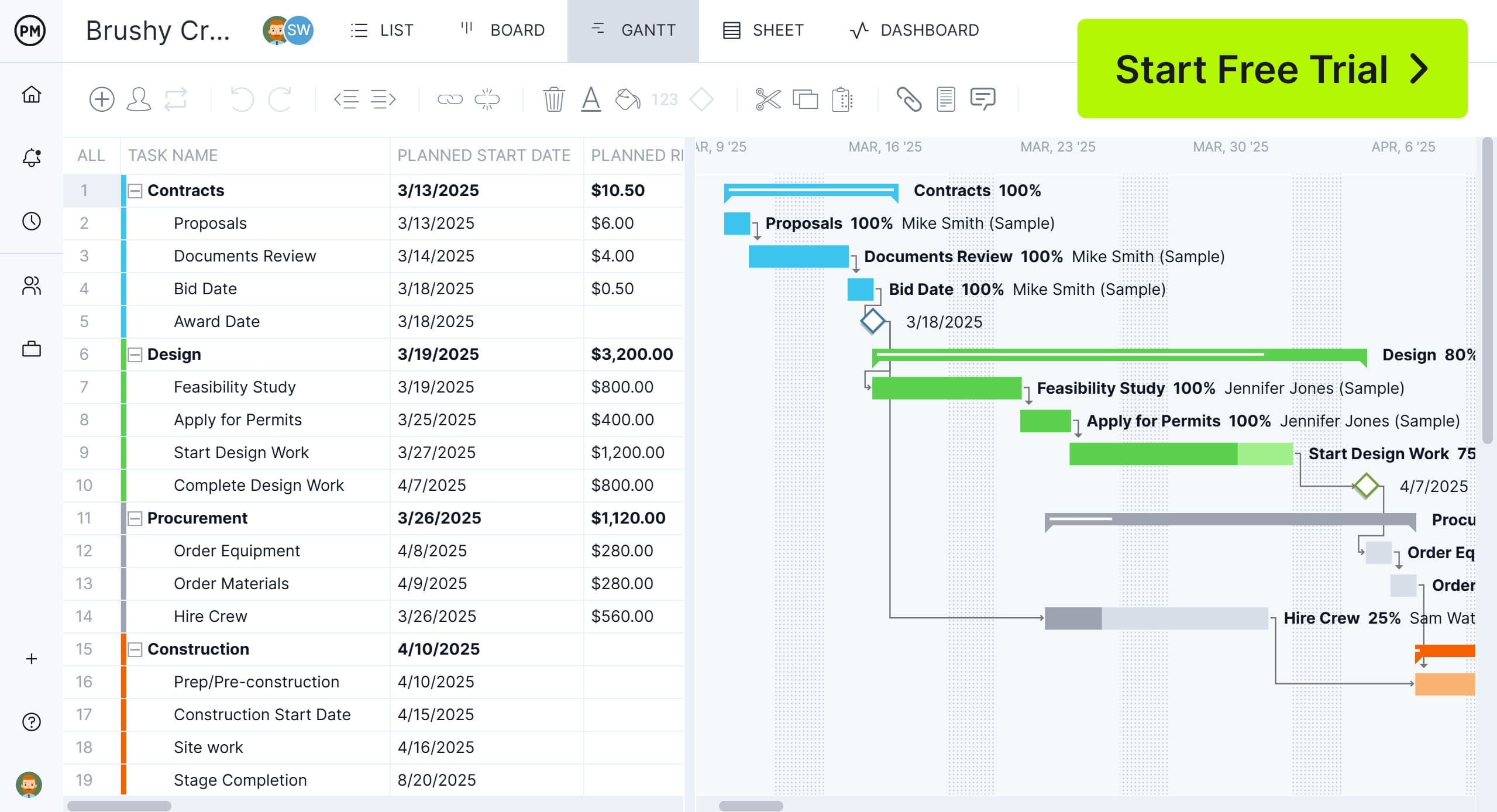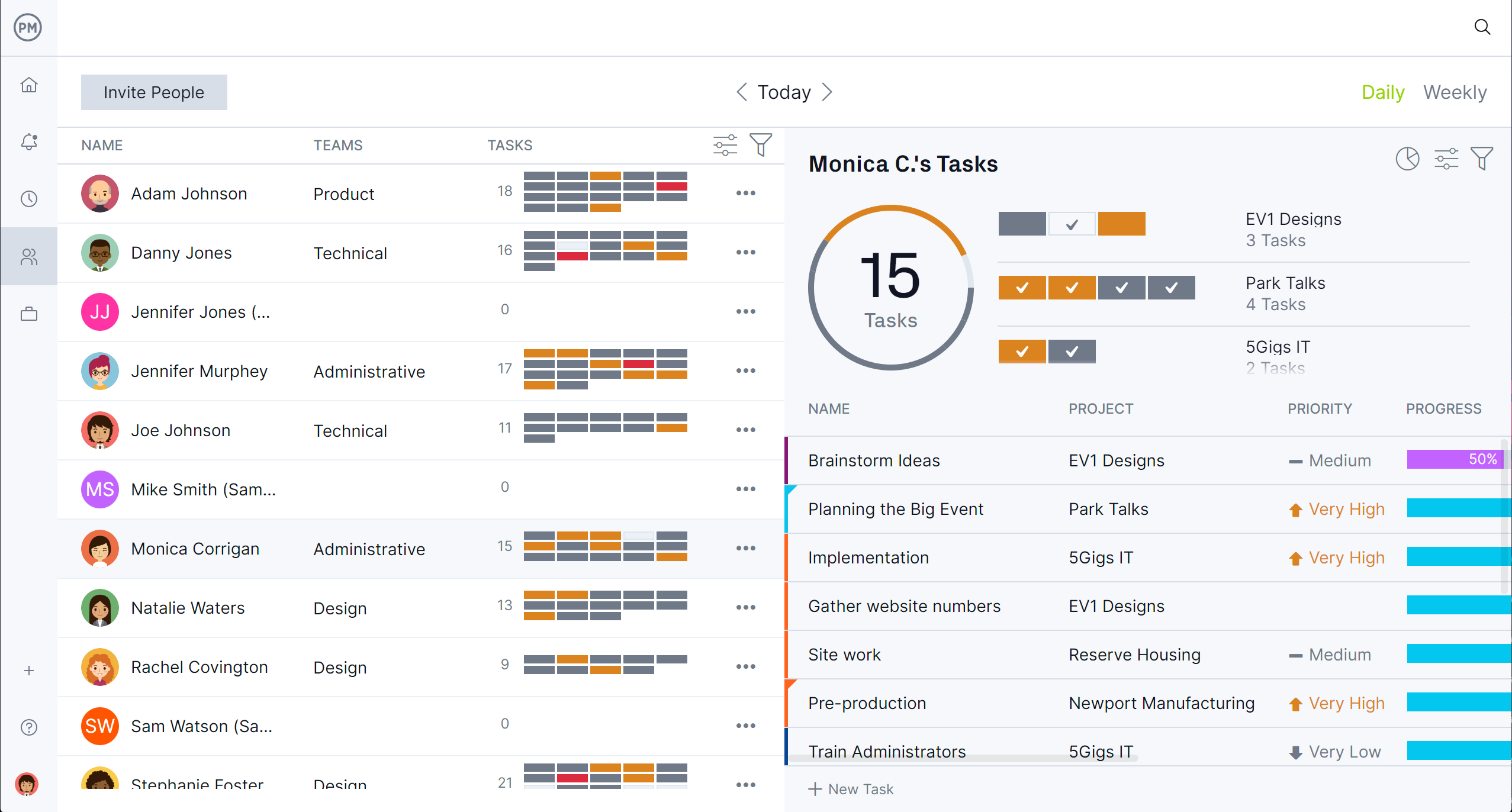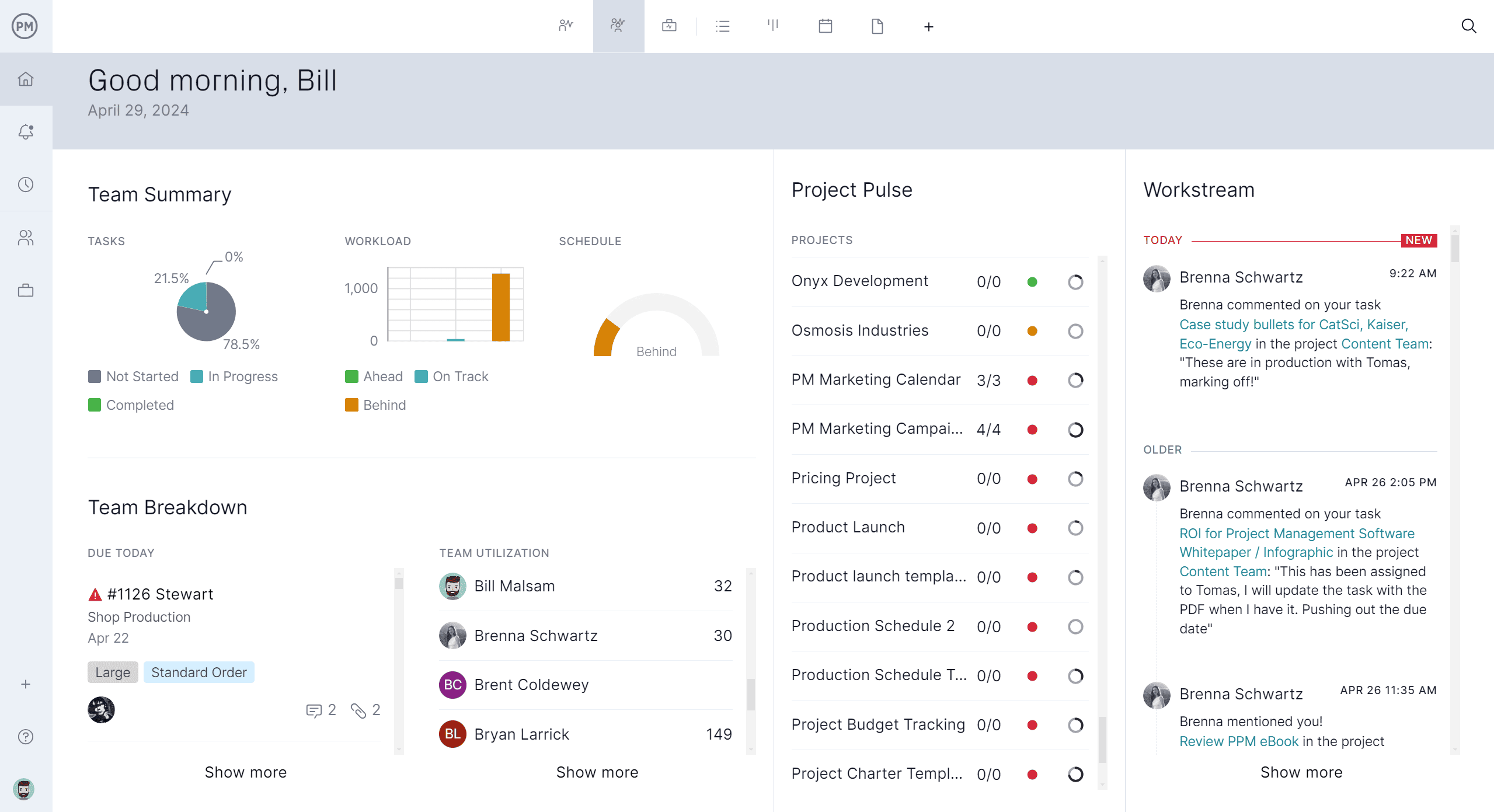The tendering process in construction is a critical phase that sets the foundation for project execution by selecting the most suitable contractor or supplier. It involves inviting bids from qualified parties to carry out specified work under outlined terms, typically driven by cost, experience and capability assessments. The tendering process ensures fairness, transparency and competitiveness, which are especially important in large-scale or publicly funded projects.
Before getting into the steps in the tendering process, we’ll more fully define the phrase and the various documentation associated with it. There’s not just one type of project tendering process, though, so we’ll explore the various ways it’s done. We’ll wrap up by offering some free construction templates and demonstrating how construction project management software can manage those projects more effectively.
What Is the Tendering Process?
The tendering process begins with the preparation of tender documents, which typically include detailed project specifications, designs, timelines and contract terms. Once these documents are released, interested parties submit their proposals or bids. These bids are then assessed based on predetermined criteria such as cost, technical capability, experience and compliance with project requirements. The goal is to identify the most qualified and competitive bidder to deliver the project as planned.
There are various types of tendering methods—including open, selective and negotiated tenders—each suited to different project needs and risk profiles, which we’ll get to below. The selection process also involves legal and regulatory considerations, especially in public projects, where transparency and accountability are paramount. Once a contractor is selected and the contract is awarded, the project can move into the execution phase with greater certainty around cost, timeline and deliverables.
This is where Gantt charts become particularly helpful. By mapping out tasks, timelines, dependencies and milestones, Gantt charts are visual project management tools that align closely with the timelines proposed during tendering. Once the winning contractor is selected, the Gantt chart helps ensure that the project execution stays on track by clearly showing what needs to be done, when, and by whom, allowing both the client and contractor to monitor progress and manage risks more effectively.
The next step is deciding on the right construction project management software to plan, manage and track the project. The inclusion of a powerful Gantt chart is a given. These are essential tools in scheduling construction projects. ProjectManager is award-winning construction project and portfolio management software with robust Gantt charts that schedule tasks, resources and costs. But our software goes beyond the basics to link all four types of task dependencies to avoid cost overruns and delays, filter for the critical path and can set a baseline to track progress in real time. Get started with ProjectManager today for free.

Steps in the Tendering Process
Now that we’ve defined the term, here are the key steps in the tendering process in construction. Below, we’ve outlined how a project transitions from planning to execution through a formalized bidding framework.
1. Needs Identification
The tendering process begins with identifying a construction need, whether building new infrastructure or upgrading existing facilities. Stakeholders define the scope, objectives and outcomes to guide the tender’s direction.
2. Tender Document Preparation
Once the need is defined, detailed tender documents are prepared. These typically include scope of work, technical specifications, design drawings, timelines, evaluation criteria and contract conditions. These documents form the basis for contractor bids.
3. Tender Invitation or Advertisement
Depending on the tendering method (open, selective or negotiated), the opportunity is advertised publicly or distributed to pre-qualified contractors. This step invites interested bidders to participate in the process.
4. Bidder Queries and Clarifications
During this period, bidders can raise questions about the tender documents. Clarifications are issued to ensure all bidders have the same understanding, which helps maintain fairness and consistency.
5. Bid Submission
Bidders prepare and submit their proposals by the specified deadline. Submissions usually include pricing, technical plans, timelines, qualifications and compliance documentation.
6. Bid Opening
At the close of the submission period, bids are opened—often in a transparent, witnessed setting, especially for public tenders—to document compliance and initiate evaluation.
7. Bid Evaluation
Bids are reviewed against established criteria. This can include price, technical approach, resource availability, experience and risk mitigation plans. The evaluation process ensures the selection of a capable and cost-effective contractor.
8. Contract Award
Once a preferred bidder is selected, they are formally awarded the contract. Both parties sign the agreement, which becomes the legal framework for project execution.
9. Contract Mobilization
After the award, the contractor mobilizes resources, begins procurement and prepares for on-site work. This step often includes kickoff meetings and alignment on schedules, budgets and responsibilities.

Tendering Process Documentation
Tendering process documentation ensures transparency, fairness and clarity in the bidding and contract award stages. These documents collectively provide all the necessary information that prospective bidders need to submit accurate and competitive proposals. Below are the key components of standard tender documentation.
Invitation to Tender (ITT)
The invitation to tender is the formal document that announces the opportunity and invites qualified contractors to submit bids. It includes a brief project overview, submission deadline, eligibility requirements and instructions on how to access the full tender package.
Instructions to Bidders
This section outlines the rules and procedures for submitting a tender. It includes deadlines, formats, communication protocols, criteria for evaluation and any pre-bid meeting schedules. Clear instructions ensure fairness and help prevent disqualification due to procedural errors.
Form of Tender
The form of tender is a standardized document that bidders complete to formally declare their offer. It includes the bid amount, acceptance period and legal acknowledgments, acting as the bidder’s signed commitment to undertake the work if selected.
Scope of Work (SoW)
The scope of work details the project’s specific tasks, deliverables and expectations. It defines what is in and out of scope, which helps bidders understand project boundaries and responsibilities, supporting accurate pricing and planning.
Bill of Quantities (BoQ)
This is a detailed list of materials, labor, and equipment required for the project, typically broken down by trade or phase. The BoQ allows bidders to price items systematically and facilitates apples-to-apples comparison during bid evaluation.
Technical Specifications
These define the project’s quality standards, materials, construction techniques and compliance requirements. Specifications ensure consistency across bids and help maintain the required level of performance and safety.
Drawings and Plans
Drawings visually represent the design, including layouts, dimensions and structural details. They are essential for bidders to fully understand the project’s scope and to develop accurate implementation strategies and cost estimates.
Related: 20 Free Construction Excel Templates
Types of Tendering Processes
As mentioned earlier, there are several types of tendering processes used in construction and procurement, each suited to different project needs, risk levels and procurement strategies. Understanding the distinctions between these methods helps stakeholders choose the most effective approach for achieving transparency, competition and value. Below are the main types of tendering processes:
Open Tendering
Open tendering is a public invitation for bids, allowing any qualified contractor to submit a proposal. It promotes transparency and competition but may attract a high number of unqualified bids, making evaluation more time-consuming.
Selective Tendering
In this method, only pre-qualified or invited contractors are asked to bid. Selective tendering saves time and improves bid quality by targeting firms with proven capability, but it may reduce market competition.
Negotiated Tendering
Negotiated tendering involves directly negotiating terms with a single contractor, often used in complex or time-sensitive projects. While faster and more flexible, it can raise concerns over transparency and value for money.
Single-Stage Tendering
All design and contract details are finalized before issuing the tender. Bidders submit full proposals in a single round. This method suits projects with a clear scope and minimizes ambiguity in pricing.
Two-Stage Tendering
Used for projects where the design is incomplete at tender time. In stage one, contractors are chosen based on capability and preliminary pricing; in stage two, final pricing is negotiated once design details are firm. It offers flexibility and early contractor involvement.
Framework Tendering
Framework tendering establishes agreements with suppliers for future work over a set period. Once in place, it allows for quicker procurement without re-tendering each project, ideal for ongoing or repeatable work.
Serial Tendering
This involves using a previously agreed schedule of rates for multiple projects. It is cost-effective and time-saving when several similar works are anticipated.
E-Tendering
An electronic process where tender documents are issued, received, and evaluated online. E-tendering enhances efficiency, transparency and accessibility, especially for international or large-scale projects.
Free Construction Project Management Templates
As promised, we have selected a few free construction templates from our over 100 project management templates for Excel and Word. These free templates cover all the bases when managing a project for multiple industries. Below are some that can help with the tendering process.
Bid Proposal Template
Download this free bid proposal template for Word to formally submit an offer for a project or job in response to a request for tender (RFT), request for proposal (RFP) or other solicitation. This template helps ensure that all key information is clearly communicated and professionally presented to the client or project owner.
Construction Quote Template
Use this free construction quote template for Excel to provide potential clients with an estimated cost for a construction project. It outlines the expected expenses based on labor, materials, equipment and other project-related services. This template helps ensure that quotes are clear, consistent and professional.
Construction Budget Template
This free construction budget template for Excel is used to plan, track and manage the financial aspects of a construction project. It provides a detailed breakdown of all anticipated costs associated with the project, helping stakeholders stay within budget and make informed decisions.
How ProjectManager Helps Manage Construction Projects
Using free templates is fine. But they’re a workaround to avoid upgrading to construction project management software. That’s because, unlike software, templates have to be manually updated and are poor tools for collaboration. ProjectManager is award-winning construction project and portfolio management software that is online and available as a mobile application for Android and iOS, making it easy to update tasks on the job site or anywhere.
Templates can’t do that. Templates also don’t have multiple project views like we do, with Gantt charts, kanban boards, sheet, task and calendar views that allow general contractors and their teams to work with the tools that are right for their job, all of which are updated together to keep everyone on the same page.
Allocate Labor, Materials and Equipment Efficiently
General contractors can assign tasks based on availability and skill, balance workloads across subcontractors or crews and ensure no one is overbooked or underutilized. This is especially valuable in construction, where delays in one trade (e.g., electrical) can bottleneck others (e.g., drywall).
Color-coded workload charts make it easy to see who’s overallocated or underallocated. Managers can balance their team’s workload without leaving the chart to keep them productive. There’s also a team page that offers a daily or weekly summary of their activities. It can be filtered by progress or priority and tasks can be updated from the same page.

Monitor Progress in Real Time With Dashboards, Reports and Timesheets
It’s easy to see the status of key deliverables and budgets on real-time project and portfolio dashboards, while Gantt charts provide a visual timeline of the entire project with dependencies. Secure timesheets allow for accurate labor tracking, feeding into cost calculations and payroll.
Collectively, these tools help construction teams adapt quickly, spot issues before they escalate, and maintain alignment with project timelines and financial goals. Plus, customizable reports can be shared with stakeholders to keep them updated on progress or filtered to focus on key data points the team needs to know.

Related Construction Project Management Content
The tendering process is only part of the larger construction project management process. Readers interested in learning more should check out the links below that touch on construction documents, reporting and much more.
- 32 Construction Documents (Templates Included)
- Construction Reporting: Types of Construction Reports
- Critical Path Method (CPM) in Construction: A Quick Guide
- Best Construction Scheduling Software
- Types of Construction Contracts: Pros, Cons & Best Practices
ProjectManager is online construction project and portfolio management software that connects teams whether they’re in the office or out in the field. They can share files, comment at the task level and stay up to date with email and in-app notifications. Join teams at Avis, Nestle and Siemens who are using our software to deliver successful projects. Get started with ProjectManager today for free.



